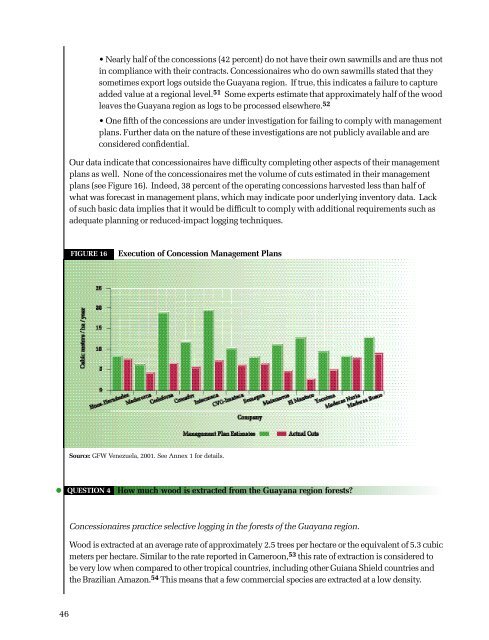Usar pâgs xvii-134 - ResearchGate
Usar pâgs xvii-134 - ResearchGate
Usar pâgs xvii-134 - ResearchGate
You also want an ePaper? Increase the reach of your titles
YUMPU automatically turns print PDFs into web optimized ePapers that Google loves.
• Nearly half of the concessions (42 percent) do not have their own sawmills and are thus notin compliance with their contracts. Concessionaires who do own sawmills stated that theysometimes export logs outside the Guayana region. If true, this indicates a failure to captureadded value at a regional level. 51 Some experts estimate that approximately half of the woodleaves the Guayana region as logs to be processed elsewhere. 52• One fifth of the concessions are under investigation for failing to comply with managementplans. Further data on the nature of these investigations are not publicly available and areconsidered confidential.Our data indicate that concessionaires have difficulty completing other aspects of their managementplans as well. None of the concessionaires met the volume of cuts estimated in their managementplans (see Figure 16). Indeed, 38 percent of the operating concessions harvested less than half ofwhat was forecast in management plans, which may indicate poor underlying inventory data. Lackof such basic data implies that it would be difficult to comply with additional requirements such asadequate planning or reduced-impact logging techniques.FIGURE 16Execution of Concession Management PlansSource: GFW Venezuela, 2001. See Annex 1 for details.• QUESTION 4How much wood is extracted from the Guayana region forests?Concessionaires practice selective logging in the forests of the Guayana region.Wood is extracted at an average rate of approximately 2.5 trees per hectare or the equivalent of 5.3 cubicmeters per hectare. Similar to the rate reported in Cameroon, 53 this rate of extraction is considered tobe very low when compared to other tropical countries, including other Guiana Shield countries andthe Brazilian Amazon. 54 This means that a few commercial species are extracted at a low density.46
















